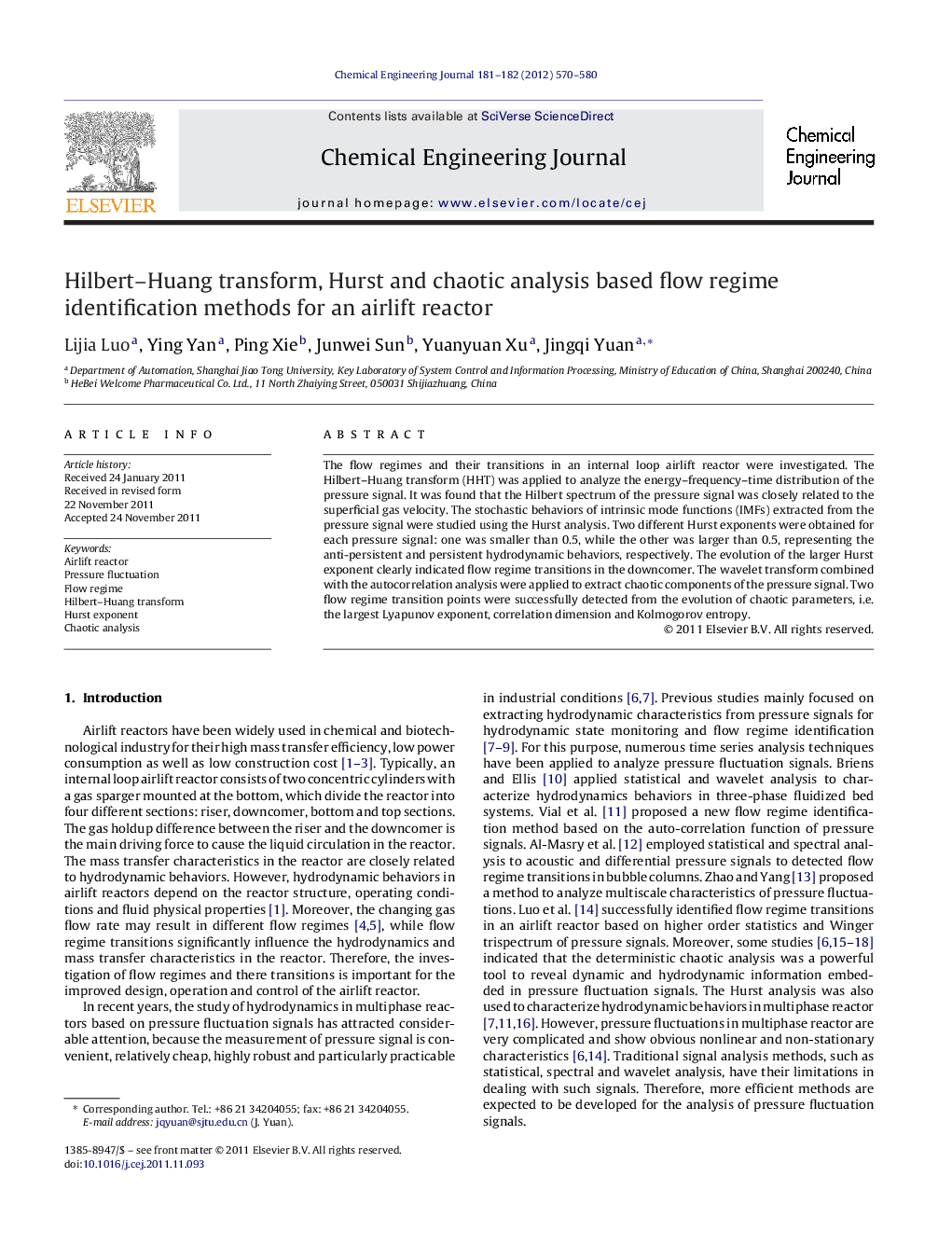| Article ID | Journal | Published Year | Pages | File Type |
|---|---|---|---|---|
| 150237 | Chemical Engineering Journal | 2012 | 11 Pages |
The flow regimes and their transitions in an internal loop airlift reactor were investigated. The Hilbert–Huang transform (HHT) was applied to analyze the energy–frequency–time distribution of the pressure signal. It was found that the Hilbert spectrum of the pressure signal was closely related to the superficial gas velocity. The stochastic behaviors of intrinsic mode functions (IMFs) extracted from the pressure signal were studied using the Hurst analysis. Two different Hurst exponents were obtained for each pressure signal: one was smaller than 0.5, while the other was larger than 0.5, representing the anti-persistent and persistent hydrodynamic behaviors, respectively. The evolution of the larger Hurst exponent clearly indicated flow regime transitions in the downcomer. The wavelet transform combined with the autocorrelation analysis were applied to extract chaotic components of the pressure signal. Two flow regime transition points were successfully detected from the evolution of chaotic parameters, i.e. the largest Lyapunov exponent, correlation dimension and Kolmogorov entropy.
► New flow regime identification methods are proposed for airlift reactors. ► The Hilbert–Huang transform is used to analyze pressure fluctuation signals. ► Stochastic behaviors of pressure signals are analyzed using Hurst analysis. ► The main chaotic components are extracted from the pressure signal. ► Chaotic parameters are used to characterize flow regime transitions.
